EXCLUSIVE INTERVIEW: WINNER OF SKY ARTS PORTRAIT ARTIST OF THE YEAR SERIES 9
8th Dec 2022
The results are in and the Sky Arts Portrait Artist of the Year Series 9 has been crowned! The deserving artist won a £10,000 commission to paint actor and author Sir Lenny Henry for the National Portrait Gallery, and £500 of art supplies from Cass Art. We caught up with them to find out more about their experience on the show and discuss their work.
WARNING SPOLIERS BELOW!
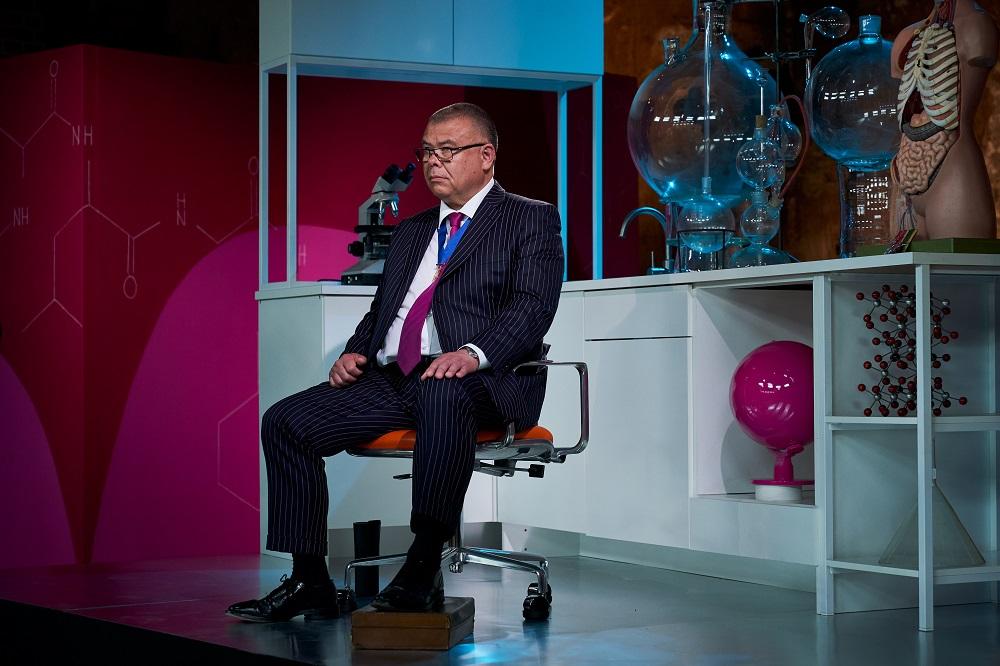
AND THE WINNER IS… MORAG CAISTER!
Hi Morag, firstly congratulations on winning Sky Arts Portrait Artist of the Year Series 9! How do you feel?
Thank you so much! I just can’t get over it - I’m so happy and I’ve had quite a bit of time to get used to the win now, but it’s like I’m getting on with things and that particular detail is still stuck on load. It’s hard to process because you just dedicate so much of your time painting alone in your studio over the years which is very fulfilling though there are elements of it that can be difficult. I was also in the competition before and so I knew how tough it was to get through each round. I’m amazed by the reaction and support that has come with the announcement, it’s just incredible and I feel very lucky.
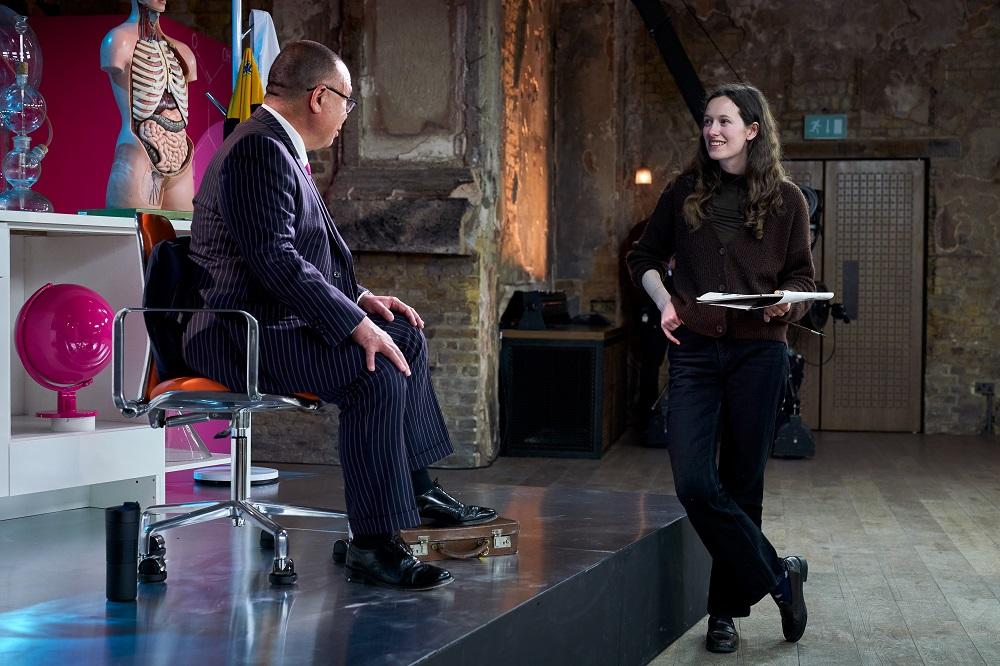
In the final, yourself, Binny Matthews and Nina Ruminska were painting Sir Jonathan Van Tam. How did you decide to tackle portraying the man many of us came to recognise from the regular Covid updates on our screens?
In the portrait I wanted to catch the way Jonathan showed us that you can go through very challenging things and stay warm and human, because in person he seemed like a very honest, kind yet tough person who was still bearing the weight from his very serious responsibilities. He smiled a lot and was so engaging, he also showed a lot of respect for us and what we were doing. We had a good talk about how we’d both like to have each other’s skills which for some reason was really moving. He was open about how much his life had changed and while it was something he was enjoying, he did sometimes miss the way things had been before. I could imagine the physical weight of the stress still pushing down on his shoulders, and the way his neat suit was slightly crumpled from it.
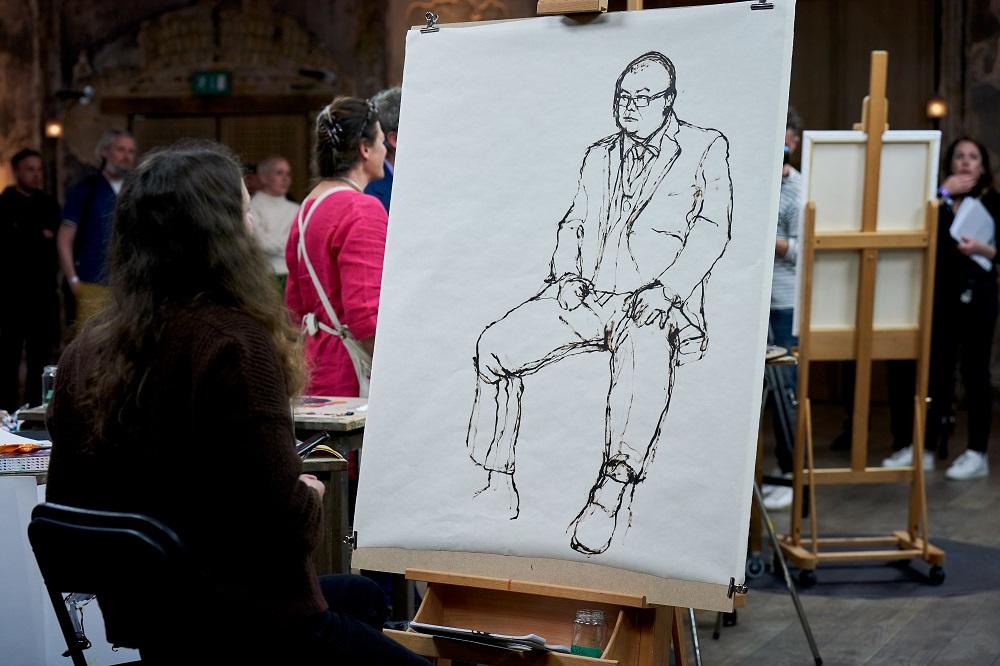
There was quite a large audience at the final, did it add to the pressure or were you quite comfortable with all of those eyes watching you?
The audience actually created a supportive buzz that you can’t always conjure up for yourself when you’re painting alone - and even though by the final I was absolutely exhausted, you’re forced to find some adrenaline from somewhere and they really help you do that! I didn’t feel distracted because you just can’t spare any energy by being self-conscious. My family were standing behind me at all times watching every brush stroke which is never something that’s happened before, but I could turn around and get an encouraging smile any moment I needed a bit of spurring on.
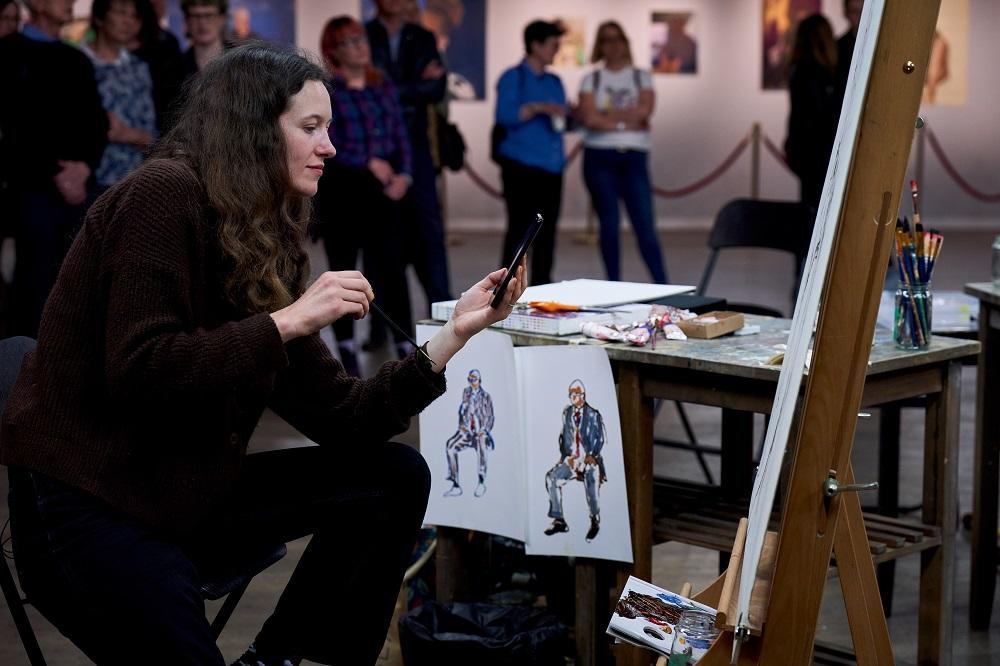
You began by making small sketches in paint, what decisions about the final work are you making during that process?
Making sketches kind of confirms what I’m seeing and that the compositions in mind do look how I think they will. Quickly colouring them in is good because then you can tell that everything will sit together in a way that makes sense. It also helps remind me that you can be quick and instinctive and trust that what needs to come through will. Because I’m not really sure how that bit works.
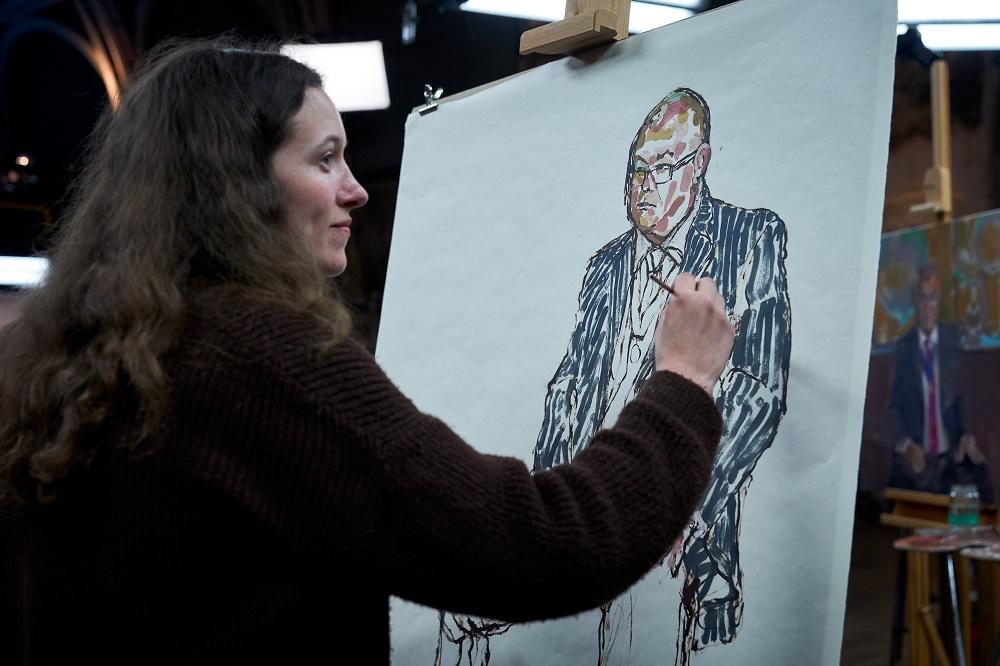
You managed to capture Sir Jonathan Van Tam’s expression and character beautifully through the pose, and the judges were so impressed with the way you described his pin-striped suit! How did you make the complex fabric work for you?
Thank you! I tend to draw out the person’s vulnerability/raw side that sits on top of them because it’s a place that I find I can meet and understand them, and I try to do it in the most respectful way possible that hopefully isn’t exposing but more understanding - though I feel there is usually a line here that I’ll be aware of and won’t cross, as I’m always slightly nervous that people won’t be ok with it when they see the work. I could relate to Jonathan’s grittiness that hadn’t totally left him, it reminded me of how my doctor or some of my teachers would look after they stopped smiling. Still nice, still dignified but tired. It was sort of breaking my heart. Everyone can relate to carrying a burden and in the periods when JVT was sitting still you could see it and I did want to be honest about that.
The lines of the suit were a risky thing, but I just felt like the best thing was to go with instincts, and If I had been in my studio, I would have definitely tried out the pinstripes in that way. Part of the decision was also thinking that the directions of the lines could bring a certain amount of sculptural description about his body form. I probably could have committed to that more, but I was conscious of it not being the right thing to do. I feel like these things can be casual and gestural and usually that’s the best way, because being in tune with the painting but not precious is when good things happen! And then you just hope that the feeling will match up to everything else in the work. If I could do it again I’d hope everything could just be a little less tight in the portrait.
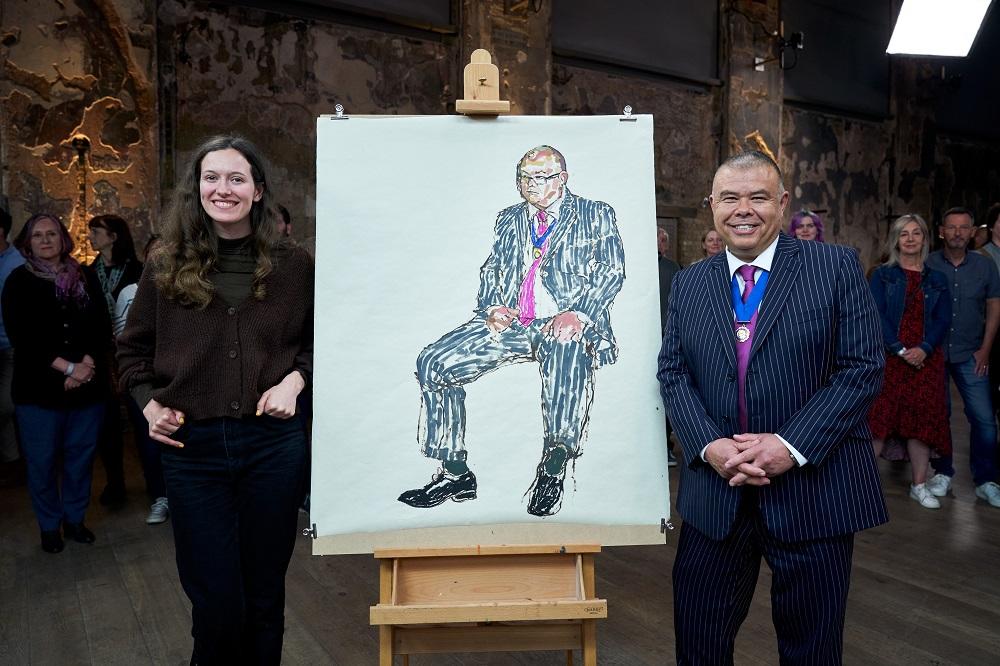
Can you talk a bit about the way you use colour to describe skin tones in your works?
I try to be unbiased about what I’m seeing and find the exact colour and the shape that it’s in, even if my mind is telling me that can’t be right, and then I’m careful to mix that particular colour. I also like to summarise everything in some parts and do big patches of the main tone that’s coming through. The colours are always better for me when I can find them from life though it takes lots of focus and patience and I can’t always keep it up. I find it useful to squint to see those patches of colours and if everything’s going according to plan the person starts to appear on the paper.
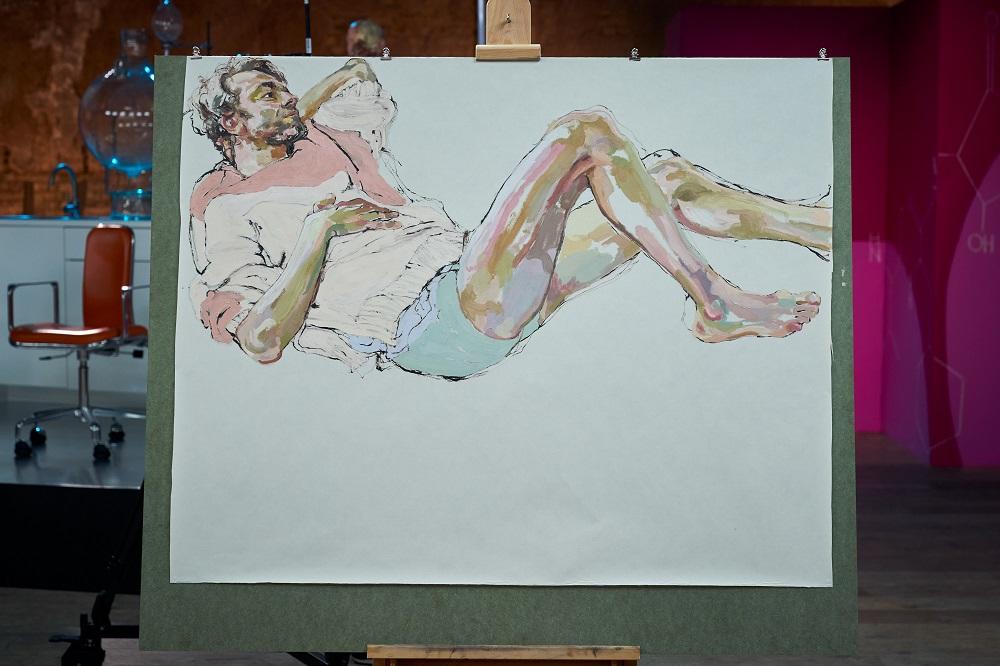
Your compositions are always interesting, you seem to have a wonderful understanding of how to balance a composition by allowing large areas of empty space to balance the weightiness of the figure. In the commission piece you made of your fiancé Genti the figure floats at the top of the paper but we feel his weight through the position of his body and invent the ground beneath him. What do you enjoy about this way of composing images?
Thanks! Painting aside, in real life I’m only really focused on the person that I’m engaging with, I won’t be able to remember what colour the chair was they were sitting on or any details about what was on the table, it all sort of lasers into them, what they’re saying and their subtle expressions, and so the air around them almost turns into this blank screen and the edges of them stand out against it. I am usually conscious of the feeling in that air around them and how it changes depending on them. Space can feel warm, cold, thin, light, dark - I also appreciate a fair amount of this is projection and I feel like including the space in the portraits adds in that reminder that it’s a version of things that I’m seeing - the person does exist in the environment around them, and in the context of my vision that’s what things look like.
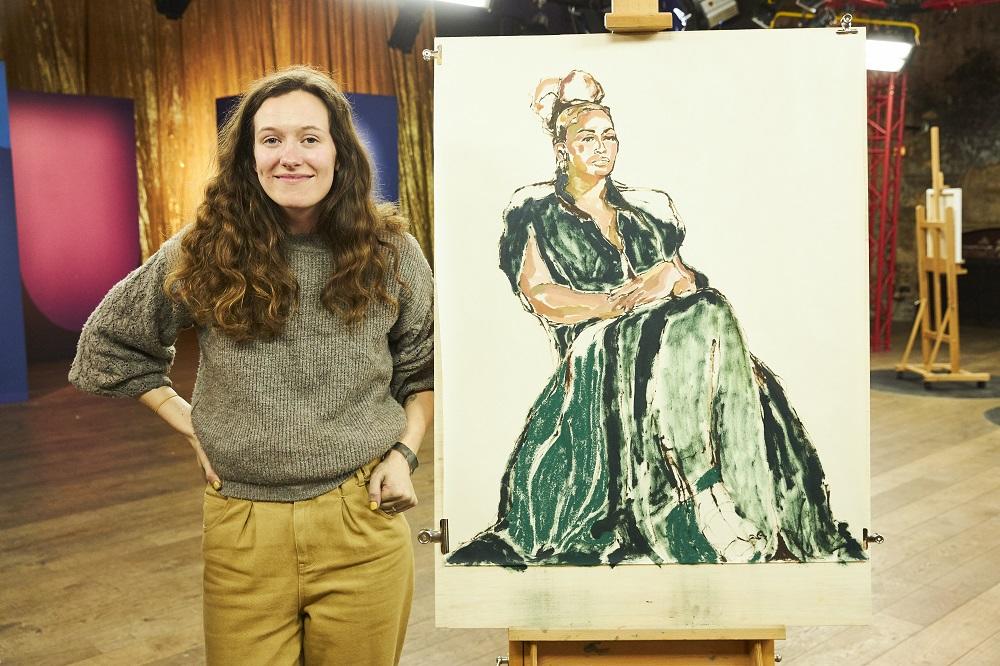
Your final winning commission was to paint actor and author Sir Lenny Henry, and the final piece will hang at the National Portrait Gallery when it reopens next year. Were you feeling the pressure? Take us through your emotions.
With Lenny Henry’s portrait I was definitely feeling the pressure - and I didn’t have an audience there to feed me energy that I didn’t have! It was just me and him, one on one, and I was very very nervous. Sometimes I can be really shy and it’s actually hard to talk. I was so conscious of the importance of this portrait, what a figure Lenny was, where it was going - it was challenging. I so wanted to make sure I was earning my place as the winner of the competition and that a person like Sir Lenny Henry would be happy with his portrait.
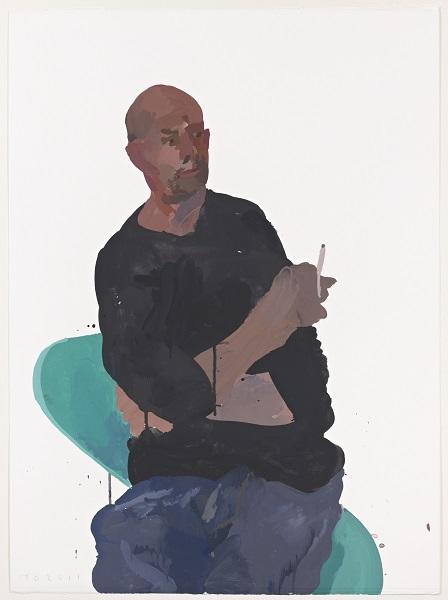
During the sitting at the Hay Festival, you were able to visit an exhibition of works from the National Portrait Gallery’s collection on display at Hay Castle. You were particularly drawn to a piece by artist Humphrey Ocean. Which other artists do you draw inspiration from and why?
I just loved that portrait. I find so much art interesting, though work that I connect with the most has this buzzy, tangly emotional charge, it kind of has the texture of white noise and you can almost feel it from the other side of the room, I think it’s the feeling of the what the artist was able to put into it. There are so many artists and not all of them are figurative though Maggi Hambling is a main person to mention, as well as Alice Neel, Tony Bevan, and more recently Ania Hobson, Charlie Schaffer, Curtis Holder, Hope Gangloff, Toyin Ojih Odutola and, quite an undiscovered artist outside of Albania, Shpëtim Kërçova.
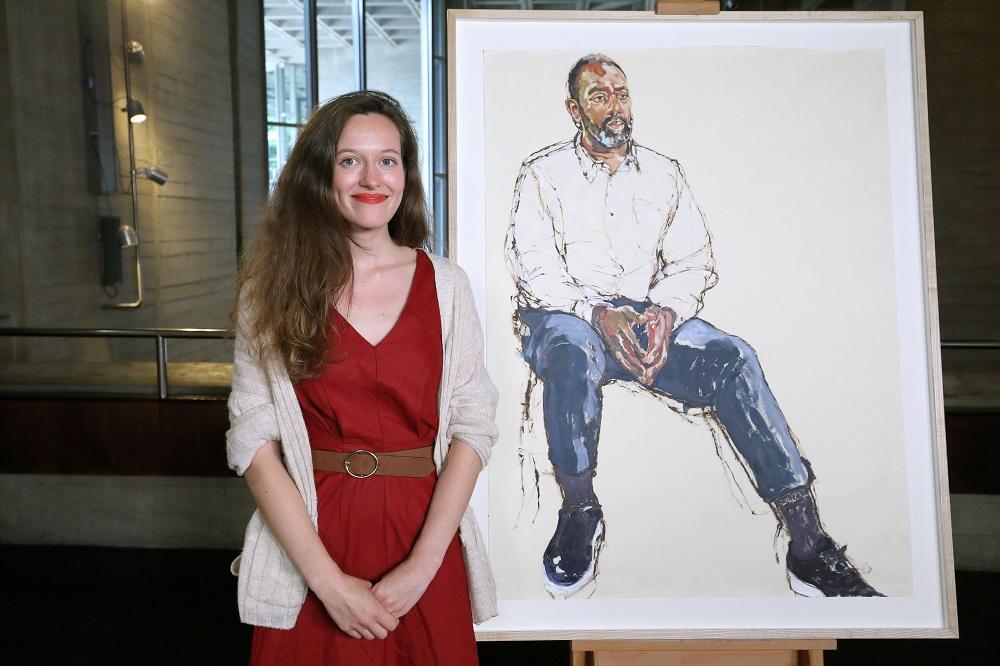
During the third and final sitting, you made the brave decision to begin the final painting, rather than creating more studies. What energy does painting from life bring to your work?
Working from life seems to make the work more truthful and brings an extra dimension to it, though people often can’t sit for the entire portrait so I’ve found if I can at least get the outline of them from life then working into the rest from photos is the next best thing. I take a photo on my phone at the same time and refer back to it every now and again during the sitting just to check I’m keeping everything in the right place in terms of perspective, but the more I’m learning to trust that I’m right about what’s in front of me the stronger and heavier I feel the work is becoming. I made my commission piece of Genti mostly from life and I can feel the difference in it. Making marks from life has my heart in my mouth the whole time, and it seems to burn through huge amounts of energy - I’m always tired after and I need to take proper breaks between large paintings.
What art materials did you choose to use in your final piece?
I stuck with the materials I had been using during the recent months and worked on Okawara paper with Michael Harding paints and Sennelier soft pastels. I was tempted to try something else, like a painting on canvas or using just pastels, because I do like working in other mediums but felt it was definitely better to do what I had been doing throughout the competition and what had got me to that moment - I didn’t have it in me to take a big risk!
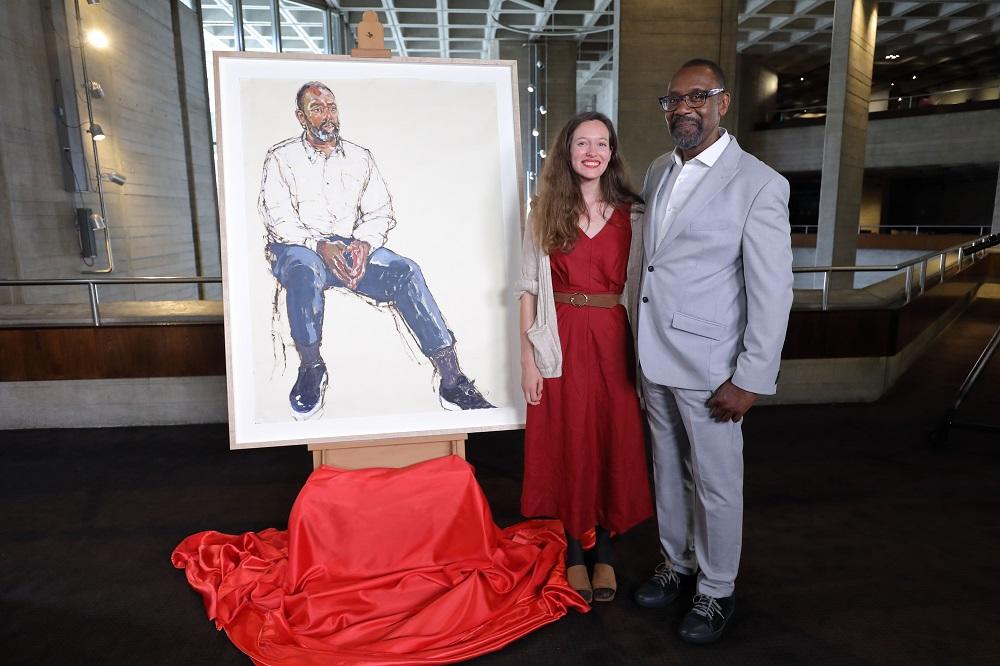
The unveiling took place at the National Theatre, Sir Lenny Henry seemed very happy with the work, feeling you had captured the more serious side of his personality; a still, thoughtful portrait and a truer reflection of the man he is today. How do you capture the essence of your sitters?
I only try to take in what’s in front of me, and Lenny was very honest with me which I respected very much. He was thoughtful, dignified, inwards, present. I’m aiming to catch a blurry summary of the person I’m painting, so that includes the moments when we first met and didn’t know each other as well as the relationship we had by our third sitting. It can be so intimate painting someone sometimes, they can go somewhere into their thoughts, and it shows on their face, you wonder what part of their life they’re remembering and what age they are in that memory. Each little bit of themselves that they show you goes into the portrait. I like the idea of catching all aspects of a person and respecting all of those things as mutual human qualities by letting them in the work, it feels like real life. His life has been extreme and his career is epic and spans over fifty years and his story is a complicated one. I was really aware of this as I was painting him and was feeling so much respect for him. I was trying not to let the image people may be expecting of Lenny overwhelm me and he seemed to appreciate that. I was so relieved when he was pleased with the portrait, his partner and sister were too and in some ways it’s even more assuring when the family approves!
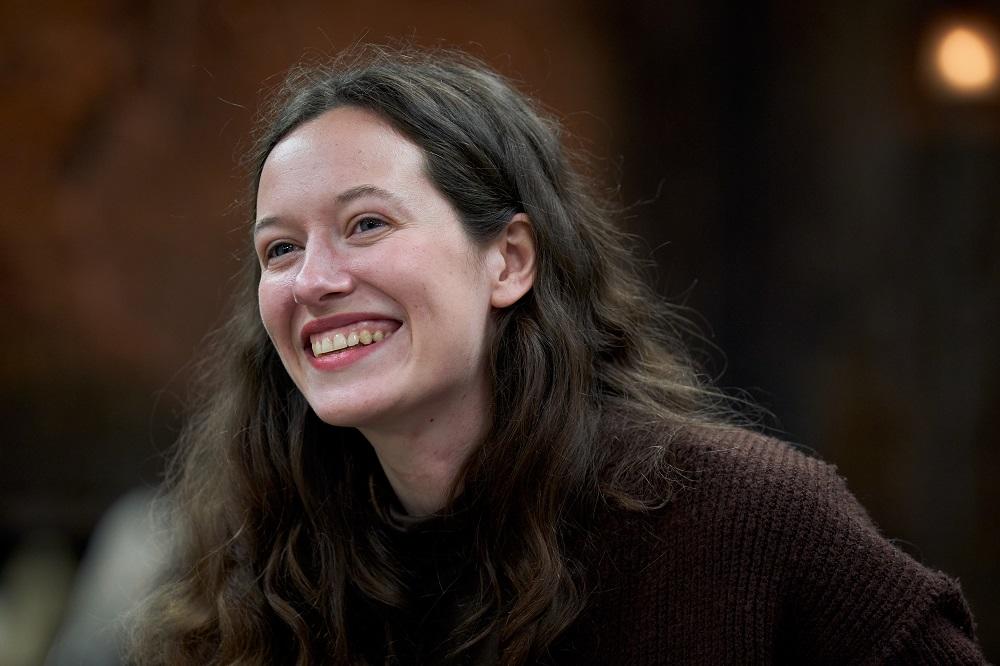
And finally, what’s next for you?
Right now I’m working on lots of new and ambitious paintings and preparing for the year ahead alongside some exciting portrait commissions! I have just had a new self-portrait added to the collection at Soho House’s brand new Cecconi’s Bicester Village which I’m so proud of because it’s alongside some fellow PAOTY artists including Christabel Blackburn, Patrick Morales-Lee and Preslav Kostov. I recently joined the wonderful Partnership Editions and have had a new collection of work released with them. I’ve also released limited archival prints of both my submission piece and final commission of Genti, and I am really delighted to also be producing one of my portrait of Sir Lenny Henry together with The National Portrait Gallery! All three are available on my website, or online with the gallery. Other than that, I’ve just moved to London and am loving being here! Kind of thinking about getting a dog - we’ll see.
Thanks Morag, we look forward to seeing what you create in the future!
Find more of Morag’s work at moragcaister.com or follow her on Instagram @moragcaister
Feeling inspired?
Entries for Portrait Artist of the Year Series 10 and Landscape Artist of the Year Series 9 are now open! Submit your portraits or landscapes for a chance to win a £10,000 commission and £500 worth of art materials from Cass Art. Plus read our exclusive interview with the judges to find out what they’re looking for.
Image credits:
- Photography © Sky Arts, paintings © StoryVault.
- NPG 6970. Nick Hornby by Humphrey Ocean, 2011 © National Portrait Gallery, London



